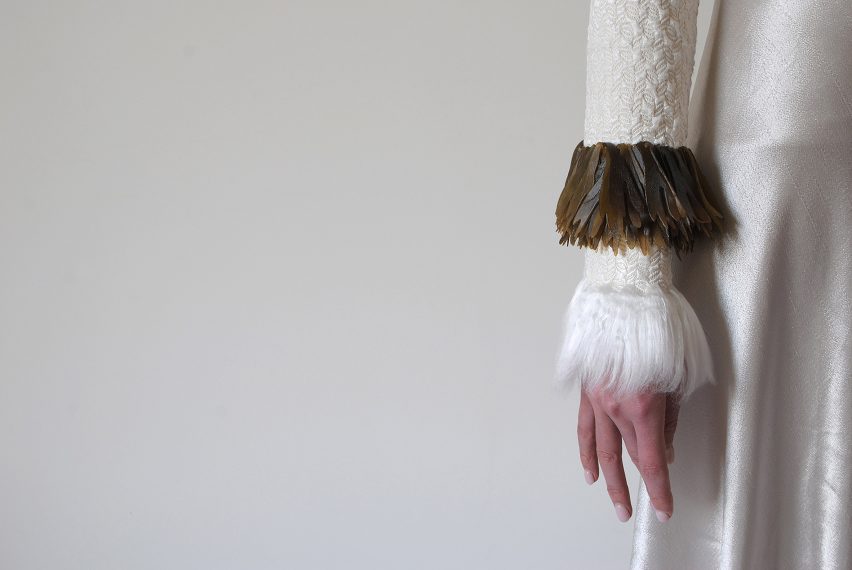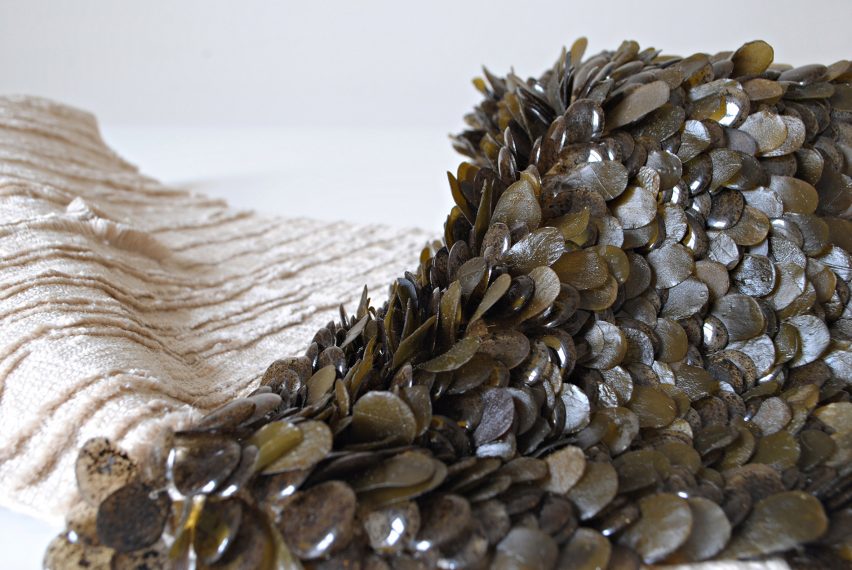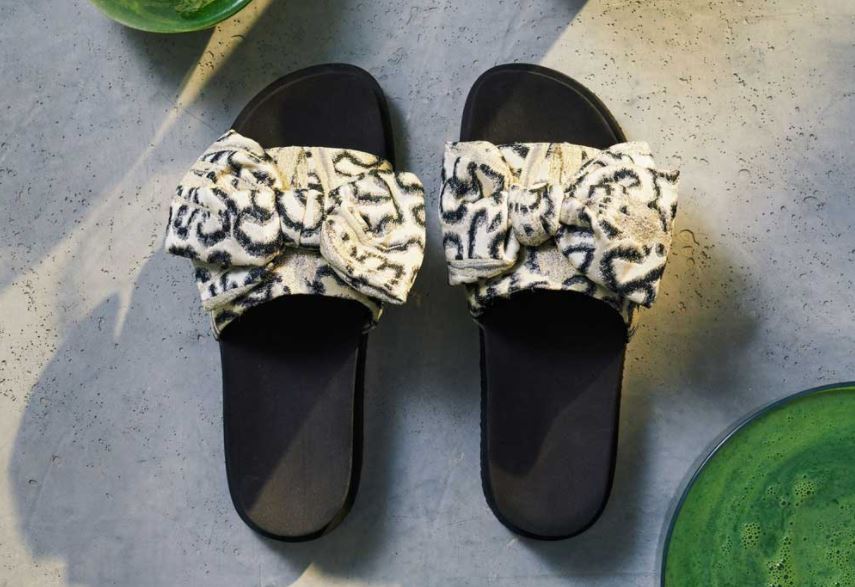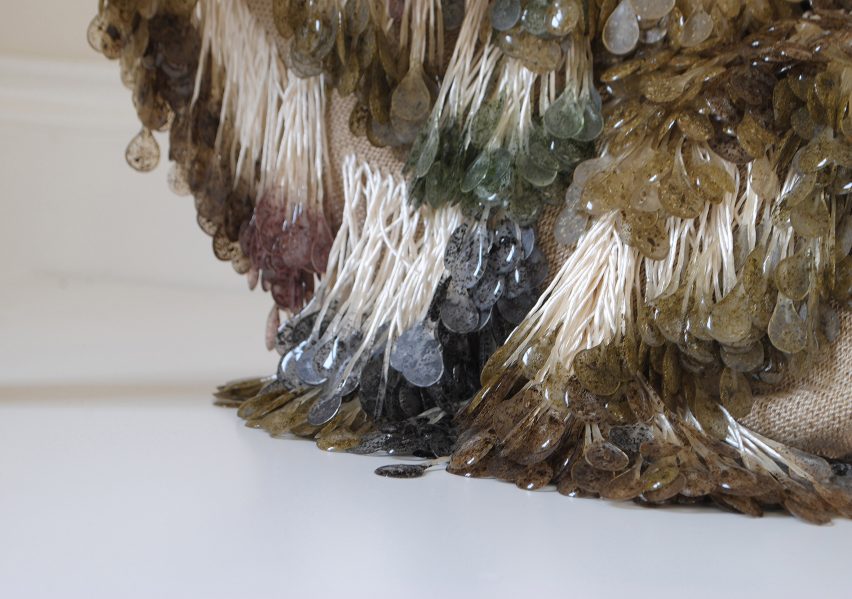Seaweed is the new frontier in fashion making its mark on the global fashion stage.

Designers such as Leticia Credidio, Jasmine Linington and Charlotte McCurdy are racing to design their new collections. And others are not far behind as they compete to become leading sustainable designers. Even Sam Elson has converted from designer to seaweed farmer with Sea Forest, after an inspiring conversation with environmentalist Tim Flannery, from the Climate Council. And it will not be long before we have celebrities posing as seaweed mermaids on the red carpet.
So, what’s this fascination with this organic marine, plant-like organism, that has been around since the dawn of time? Something is captivating designers around the globe and clearly, something incredible is happening. And it’s the kind of special thing that we witnessed when Vivienne Westwood changed the fashion world forever with her activist-inspired collections.
With so much excitement around this new global phenomenon, we can expect to see environmental activist models such as Cara Delevingne and Ella Emhoff playing their part. Dressed as out-of-this-world alien seaweed avatars on a Gucci designed space odyssey catwalk, they are likely to become the first sustainable fashion icons of this generation.
The New World of Sustainable Fashion
As we enter a fascinating, new world of sustainable innovation from food sources to fashion, everyone is wanting to get in on the action. Fashion through the generations has had a significant and devastating impact on the environment. This has resulted in depleting water sources, plastics in our oceans and increased carbon emissions.
Innovators and manufacturers are jumping on the bandwagon to do their part in saving the planet. Researching innovative, sustainable ways with minimal impact that will enable them to create textiles for the next generation of fashion. To illustrate the impact, 20, 000 litres of water is needed to produce enough cotton for just one T-shirt.
The fashion industry has been one of the main contributors to the negative environmental impacts that we are facing today. Our air is polluted, plastic is choking our oceans and we are losing our forests. All just to keep the fashion wheel turning. If we keep going down this path, we will end up destroying our planet to the point of no return.

Plastic Fibres and Unwanted Waste
With excessive demands and expectations of a fast supply chain, the industry has been producing short-lived clothing made from plastic fibres. This has resulted in creating excessive and unwanted waste that ends up in landfills. The industry uses 93 billion cubic metres of water per year and 500,000 tonnes of plastic microfibres, then dumped into the ocean.
This alone accounts for 10 per cent of global carbon emissions. These statistics tell us there needs to be an urgent overhaul within the industry for a zero-waste approach. Where it’s embedded into the whole design and production process, with a focus on quality, not quantity.
The good news is the world is starting to wake up. Thankfully, we are becoming more conscious of the devastating impacts consumerism is having on the environment. We are seeing more scientists and innovators searching for new ways to create the next generation of sustainable textiles. And we may have just hit the jackpot.
Seaweed and Kelp: the Latest Innovations
Right now, we can feel the buzz and excitement around seaweed and kelp. But what does it actually mean for the fashion industry?
Seaweed and kelp are the latest innovations in biodegradable textiles that is taking the fashion world by storm. Fashion designers from around the globe are becoming obsessed with this organic organism that can be refined into a new, environmentally friendly bio-yarn.
Scientists and manufacturers have discovered that this new material is so diverse and robust, it can be used to make almost anything, even shoes and trainers. One of its amazing qualities is that it does not dissolve in water and is 100 per cent biodegradable. What is also incredible, is that when in its natural form it cleans the environment as it grows. It also purifies the water and turns carbon into oxygen, resulting in reduced fossil fuel dependence.
Indigenous Communities
It may only be emerging in the fashion world now, but seaweed and kelp have been used by indigenous communities all around the world for centuries. From using them as a food source, medicinal purposes and rituals to making things such as woven kelp baskets, jewellery, clothes and shoes. If Western cultures had listened to indigenous people in the past, humanity and the planet would be in a better situation now.
What are Seaweed and Kelp?

Seaweed and kelp are marine algae. Until now it has been the slimy friend of our underwater world. Scientists and innovators have been busy harvesting the algae, and have discovered it can be converted into zero-waste sustainable fabrics. Microalgae has the capacity to double in size in 24 hours. It’s flexible and can be moulded into any form of clothing. When you consider cotton takes 100 days to grow, this is a gamechanger for manufacturers. With over 50 species of algae that have different textures, flexibility and strength the world of algae is unlimited. Manufacturers will be able to create many new fabrics that will keep designers happy and busy for years to come. And produce biodegradable, zero-waste stock to meet demand.
From Synthetics to Seas
Fast-fashion giant H&M has also turned to the sea for its latest Conscious Exclusive collection. It launched its Bloom Foam footwear, featuring a high-performance foam made from algae, where every pair of shoes are made from Bloom Foam algae. The Bloom Foam algae are produced from around 225 bottles of filtered water, which are is returned to the environment.
As the world is moving towards a more sustainable future, cotton will be replaced by new biodegradable materials. While cotton has served us well, we have to let go of the old and embrace the new. We must not forget that cotton has contributed to degradation, soil erosion, and water contamination from pesticides. Along with synthetic fabrics, such as polyester which have also been toxic to the environment. Trillions of plastic microfibres have poisoned our oceans and marine life. There has never been a more urgent time to change, than now.

Thankfully, mother nature is giving us the opportunity to resurrect ourselves from destroying our planet. She has gifted us with this incredible organism that has the potential for mass-market commercialisation. It’s now in the hands of communities, innovators, manufacturers and designers to take responsibility. As a collective, we need to respect what we have been blessed with if we are serious about a sustainable future for fashion.
Fashion Designers with a Purpose
New York designer Charlotte McCurdy has gone all out with seaweed and sustainability. From algae-sequin dresses to dyeing clothes with bacteria, she plants trackable pigments in her cotton, using emerging technological innovations. The materials she has developed are unlikely to hit major global stores anytime soon, as the design, manufacturing and production processes are costly and slow. Funding is also competitive. However, she is certainly playing her role for the future of sustainable fashion whilst supporting the fight against climate change.
Scottish designer Jasmine Linington, known for her Seaweed Girl clothing line, uses seaweed to make couture clothing. She uses fabrics that are carbon-neutral and 100 per cent biodegradable and made from fibres of dried, crushed seaweed. Linington combines fabrics with wood fibres and coloured dyes to create her stunning couture collection. And for the colourful bead-like embellishments, by-products of seaweed are used in combination with eco-dyeing processes.
Italian-Japanese designer Leticia Credidio is making an impact, globally. She created sleepwear and loungewear designed specifically to ‘unleash the power of sleep’. An ‘essential ingredient’ for a healthy, happy life. Her sleepwear also has other unique selling points – it’s sustainable, and created using biodegradable materials and organic cotton.
The fashion industry has been so focused on manmade-synthetic fabrics, that release microfibres when washed, which then end up in our oceans. Credidio’s approach is attracting the eco-conscious shopper. Her new collection is made using seaweed, making her sleepwear not only sustainable but with additional health benefits. Seaweed contains amazing properties, with active agents like amino acids and antioxidants. They also contain vital healthy minerals – potassium, iodine, magnesium, and vitamins A, B and E. And when made into a fabric it contains nutrients that have healing effects on the skin.
What Does the Future Hold for Sustainable Fashion?

Despite the emergence of new sustainable technologies and innovations, there is some scepticism within the fashion industry. Many questions are being raised on whether sustainable initiatives can lead to large-scale transformation. But if we want to see a major overhaul within the industry, the only way to move is forward. The right direction is to have a global sustainability movement, where the strength comes from all stakeholders. This includes communities, independent designers, major brands, manufacturers and retailers, where sustainability is a global, standard business practice.
Technology alone will not resolve the issues we are currently facing in the industry. There is an urgent need for standardised, international policies that incorporate complete transparency. Consumers must be aware of where a company’s garments are made and where its fabrics and raw materials come from. And the inclusion of culture, ethics, multiple social, environmental and justice initiatives around fashion is imperative. One of the biggest impacts will be businesses and NGOs improving rather than replacing existing systems, which is already starting to happen with the UN Fashion Alliance for Sustainable Fashion.
Subscribe to FIB’s Weekly Breaking News Report for your weekly dose of music, fashion and pop culture news!







